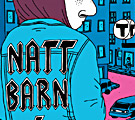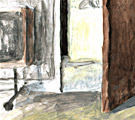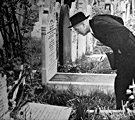Simon Hessler

My project investigates the role and necessity of the graphic designer in relation to the layout of prosaic text.
“Typesetter” is an old profession which traditionally meant manually arranging types into rows for maximum readability. The linotype machine introduced at the turn of the last century and the advent of the personal computer have in many ways replaced this role with artificial intelligence and the “graphic designer”.
Centuries of conventions have led to the modern reader swallowing all prosaic text, often without noticing its visual aspect.
Consequently, the thing most readers know nothing about is a profession and a process that is not only undergoing great change, but also raises issues regarding the purpose of the designer.
How much space should a designer take up in the text? How do you choose typeface? Does creativity belong in designing text? Can text be separated from its visual expression?
I have interviewed a number of designers, writers, poets and publishers to discuss these issues. I have conducted practical experiments to explore the roles and relationship between form and content.
"Typsättare" är ett gammalt yrke som traditionellt betydde ungefär manuellt arrangemang av typer i rader för maximal läsbarhet. Linotype-maskinen vid sekelskiftet och persondatorns intåg har på många sätt ersatt rollen med artificiell intelligens och den "grafiska formgivaren".
Århundraden av konventioner har gjort att den moderna läsaren sväljer all prosatext, oftast utan att märka ett den har en visuell aspekt.
Vad de flesta läsare inte känner till är alltså ett yrke och en process som inte bara är i stor förändring men också väcker frågor om formgivarens syfte.
Hur mycket plats ska man ta som formgivare i texten? Hur väljer man typsnitt? Hör kreativitet hemma i utformning av text? Kan text skiljas från sitt visuella uttryck?
Jag har intervjuat ett antal formgivare, författare, poeter och förläggare och diskuterat de här frågorna. Jag har utfört praktiska experiment för att utforska rollerna och förhållandet mellan form och innehåll.











